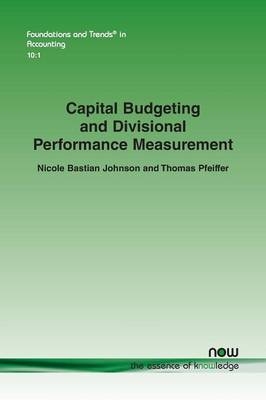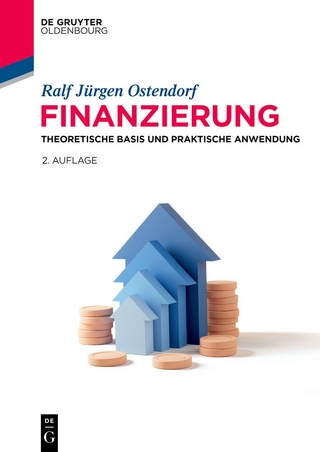
Capital Budgeting and Divisional Performance Measurement
Seiten
2016
now publishers Inc (Verlag)
978-1-68083-124-5 (ISBN)
now publishers Inc (Verlag)
978-1-68083-124-5 (ISBN)
Demonstrates that formal capital budgeting mechanisms that allocate investment costs to divisions via capital charge rates, depreciation schedules, and inter-divisional cost-sharing rules, can yield divisional performance measures that provide proper two-stage investment incentives.
Capital Budgeting and Divisional Performance Measurement synthesizes recent work on the use of capital budgeting mechanisms to coordinate decentralized investment decisions in multi-division firms with a focus on two-stage investment problems. Divisional managers often have private information about investment profitability that evolves over time and divisional investments can create positive or negative externalities for other divisions at individual investment stages. The authors show that in these circumstances, formal capital budgeting mechanisms that allocate investment costs to divisions via capital charge rates, depreciation schedules, and inter-divisional cost-sharing rules, can yield divisional performance measures that provide proper two-stage investment incentives.
Several recurring themes arise in our analysis. First, positive and negative externalities that arise from divisional investment decisions can cause optimal capital charge rates to deviate substantially from the firm's cost of capital. Second, the optimal inter-divisional cost-sharing rules for shared investments can be approximated by simple rules frequently observed in practice, such as equal cost-sharing or sharing proportional to divisional performance, under sometimes counter-intuitive circumstances. Third, agency costs can change the divisions' investment decisions beyond the standard underinvestment rationing result in two-stage investment problems and can impact the first and second-stage cost charges quite differently. Finally, the analysis shows very broadly that the key components of a two-stage optimal budgeting mechanism, including capital charge rates and inter-divisional cost-sharing rules, can vary significantly across the two investment stages, even when the investment decisions appear to be similar at each stage.
Capital Budgeting and Divisional Performance Measurement synthesizes recent work on the use of capital budgeting mechanisms to coordinate decentralized investment decisions in multi-division firms with a focus on two-stage investment problems. Divisional managers often have private information about investment profitability that evolves over time and divisional investments can create positive or negative externalities for other divisions at individual investment stages. The authors show that in these circumstances, formal capital budgeting mechanisms that allocate investment costs to divisions via capital charge rates, depreciation schedules, and inter-divisional cost-sharing rules, can yield divisional performance measures that provide proper two-stage investment incentives.
Several recurring themes arise in our analysis. First, positive and negative externalities that arise from divisional investment decisions can cause optimal capital charge rates to deviate substantially from the firm's cost of capital. Second, the optimal inter-divisional cost-sharing rules for shared investments can be approximated by simple rules frequently observed in practice, such as equal cost-sharing or sharing proportional to divisional performance, under sometimes counter-intuitive circumstances. Third, agency costs can change the divisions' investment decisions beyond the standard underinvestment rationing result in two-stage investment problems and can impact the first and second-stage cost charges quite differently. Finally, the analysis shows very broadly that the key components of a two-stage optimal budgeting mechanism, including capital charge rates and inter-divisional cost-sharing rules, can vary significantly across the two investment stages, even when the investment decisions appear to be similar at each stage.
Introduction
Robust Capital Budgeting for Exclusive Investments
Incentive Contracting and Capital Budgeting for Exclusive Investments
Capital Budgeting for Shared Investments
Conclusion
| Erscheinungsdatum | 01.07.2016 |
|---|---|
| Reihe/Serie | Foundations and Trends® in Accounting |
| Verlagsort | Hanover |
| Sprache | englisch |
| Maße | 156 x 234 mm |
| Gewicht | 178 g |
| Themenwelt | Wirtschaft ► Betriebswirtschaft / Management ► Finanzierung |
| Wirtschaft ► Betriebswirtschaft / Management ► Rechnungswesen / Bilanzen | |
| ISBN-10 | 1-68083-124-0 / 1680831240 |
| ISBN-13 | 978-1-68083-124-5 / 9781680831245 |
| Zustand | Neuware |
| Haben Sie eine Frage zum Produkt? |
Mehr entdecken
aus dem Bereich
aus dem Bereich
Investition, Finanzierung, Finanzmärkte und Steuerung
Buch | Softcover (2022)
Vahlen (Verlag)
39,80 €
theoretische Basis und praktische Anwendung
Buch | Softcover (2023)
De Gruyter Oldenbourg (Verlag)
39,95 €
Funktionen — Methoden — Grundsätze
Buch | Hardcover (2024)
Springer Gabler (Verlag)
69,99 €


